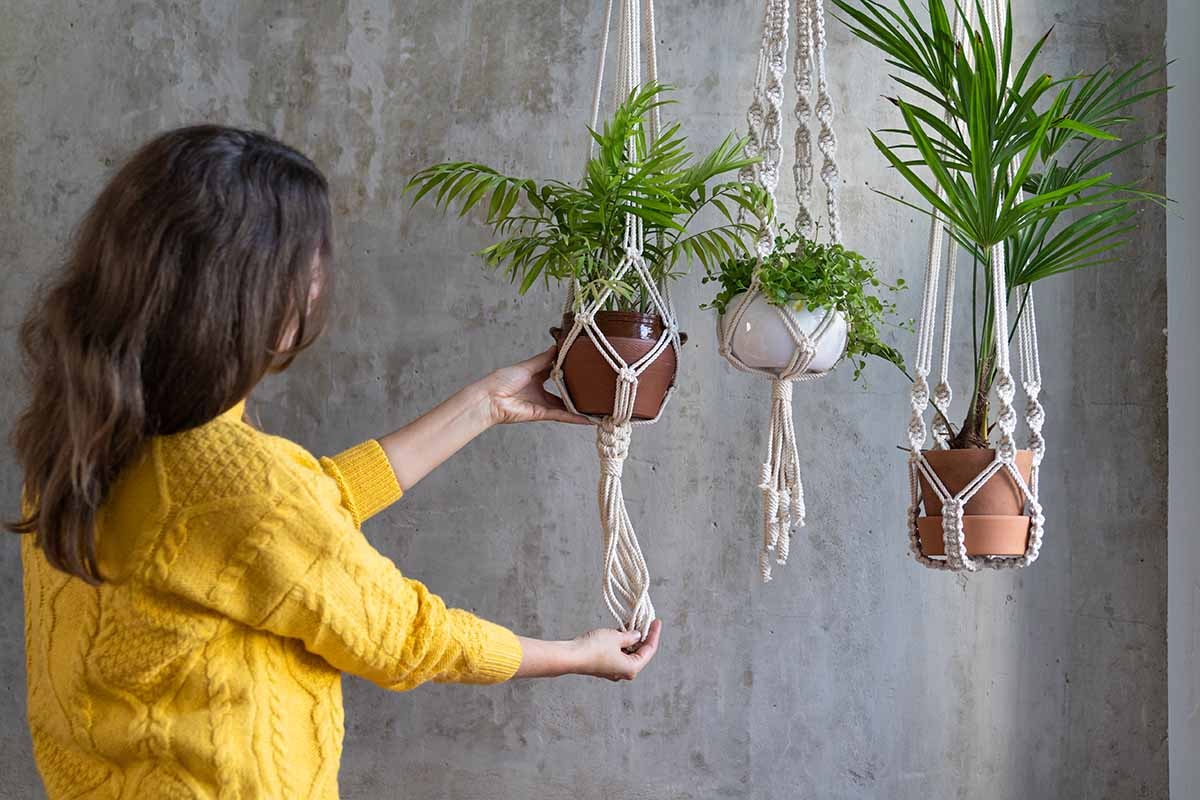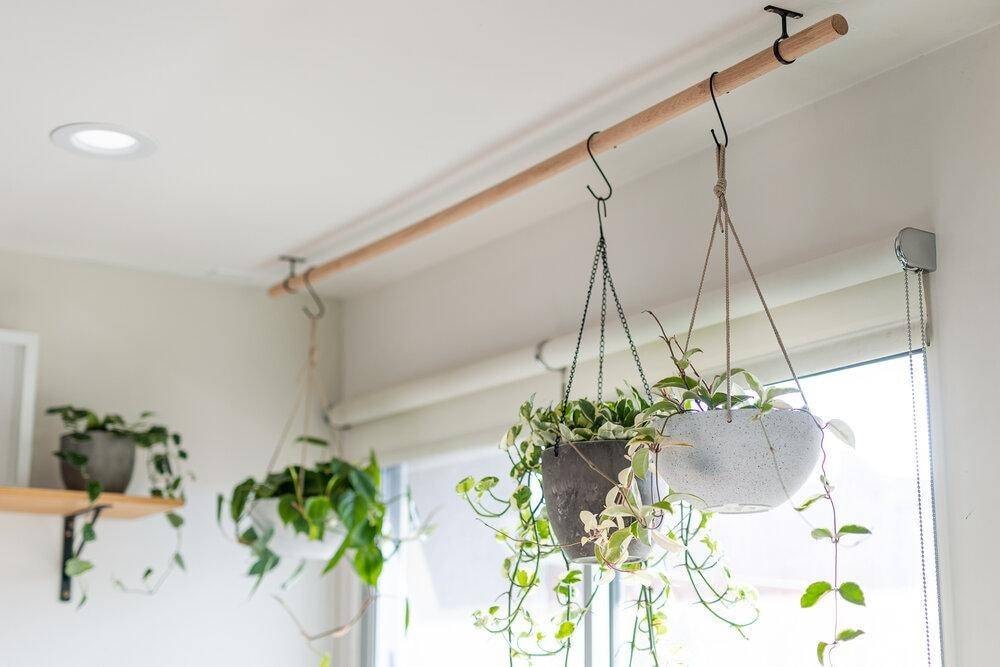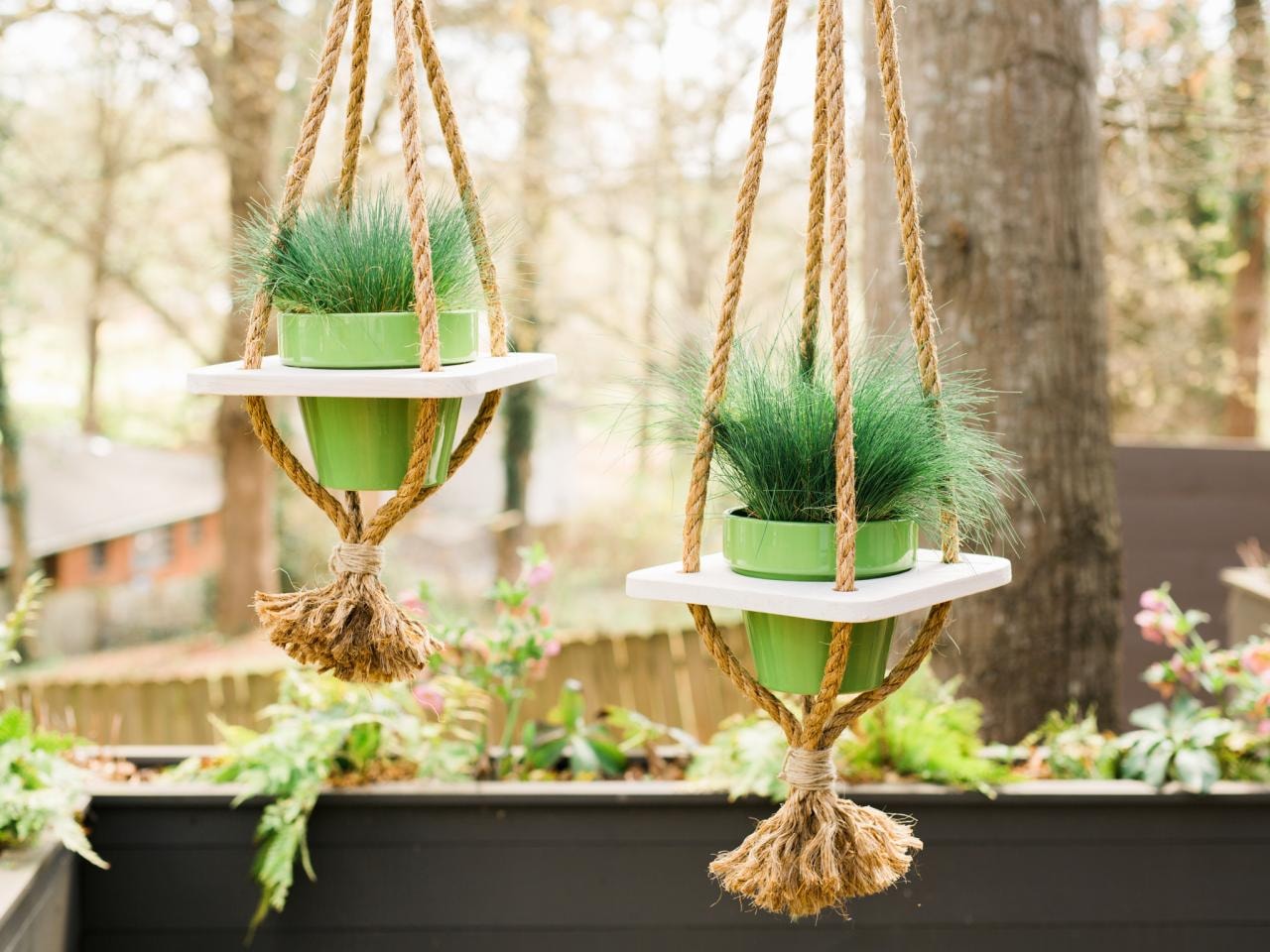HousePlantJoy is supported by our audience. When you purchase through one of our links, we may earn a small affiliate commission. As an Amazon Associate I earn from qualifying purchases. Your cost is not affected.
==================
Hanging plant pots indoor can be a game-changer for your home décor, effortlessly adding a touch of nature while conserving valuable floor space. These stylish and versatile additions not only enhance the aesthetics of your living area but also bring numerous benefits, such as improving air quality, boosting your mood, and creating a serene, calming environment that invites relaxation. With the right approach, you can transform any room into a vibrant, green sanctuary that feels fresh and inviting.
In this guide, you’ll explore the best tips for choosing and arranging hanging plant pots indoors, from selecting the right plants to finding the perfect spots for optimal growth and visual impact. Additionally, you’ll uncover the surprising benefits these hanging plants offer for your well-being and overall home atmosphere. Whether you’re a seasoned plant lover or just starting your indoor gardening journey, this guide will help you create a lush, thriving indoor oasis with minimal effort and maximum style.
Hanging Plant Pots Indoor: Tips and Benefits for a Greener, Cozier Home
Hanging plant pots indoor is a great way to add greenery to your home without taking up floor space. They bring nature indoors and can make your rooms feel more alive and vibrant. Indoor hanging plants can improve air quality, reduce stress, and create a calming atmosphere in your living spaces.
You can choose from many types of hanging pots, from simple plastic containers to stylish ceramic or metal designs. Some popular plants for hanging baskets include spider plants, pothos, and ferns. These plants are easy to care for and can thrive in indoor conditions.
When setting up your hanging garden, make sure to pick spots with the right amount of light for your chosen plants. Water them regularly and check for any signs of pests or disease. With some care, your indoor hanging plants will flourish and bring beauty to your home for years.
Key Takeaways
- Hanging plant pots optimize floor space by elevating greenery, making them perfect for smaller homes and apartments.
- Indoor hanging plants improve air quality and create a calming atmosphere, contributing to overall well-being and reduced stress.
- Various hanging pot materials and designs are available, allowing you to match them with your home’s decor and lighting conditions.
- Regular care, including appropriate watering, pruning, and pest management, ensures your hanging plants remain healthy and vibrant.
Benefits of Hanging Plant Pots
Hanging plant pots can brighten up your indoor space in many ways. They add a touch of nature to your home without taking up valuable floor space. You can use hanging plants to create a lush layered effect near windows. This brings life to empty corners and bare walls.
Hanging pots allow you to grow plants at eye level. This makes it easier to enjoy their beauty and care for them. These pots are great for tiny homes or apartments. They let you have a garden even with limited space.
Hanging plant pots indoor can improve air quality in your home. They help remove toxins and increase humidity. You can use hanging pots to create privacy. Place them strategically to block unwanted views. These pots are perfect for trailing plants, allowing you to watch vines and tendrils grow downwards, adding visual interest.
Hanging plants can help reduce stress. Caring for them can be a relaxing hobby. You can easily change the look of a room by moving hanging pots around. This flexibility lets you update your decor whenever you want. Lastly, hanging pots protect your plants from curious pets or small children. This keeps both your plants and loved ones safe.
Material Matters
The material of your hanging pot affects both looks and function. Here are some popular options:
- Plastic: Light, cheap, and easy to clean. Suitable for bathrooms or humid areas.
- Ceramic: Stylish and heavy. Holds moisture well but can be breakable.
- Metal: Durable and modern-looking. It may heat up in direct sun.
- Wood: Natural look but needs extra care to prevent rot.
- Fiber: Eco-friendly and lightweight. Often used for hanging baskets.
Consider where you’ll put the pot and what plant you’re growing. Each material has pros and cons. Pick one that fits your needs and style.
Size and Volume
The size of your hanging pot is crucial. It needs to fit your space and support your plant’s growth. A 4-6 inch pot works well for small plants like succulents. Medium-sized plants like pothos or ferns do best in 8-10 inch pots. Large plants such as bird’s nest ferns need 12 inches or more.
Remember, bigger pots hold more soil. This means more water and nutrients for your plant. But they’re also heavier. Make sure your ceiling or hooks can handle the weight.
Drainage Considerations
Good drainage is key for healthy plants. Without it, roots can rot, and plants may die. Look for pots with drainage holes at the bottom. These let excess water escape. If your pot doesn’t have holes, you can:
- Drill some yourself (be careful with ceramic!)
- Use a plastic pot with holes inside a decorative outer pot
- Add a layer of pebbles at the bottom for water to collect
Some indoor hanging planters come with built-in saucers. These catch drips and protect your floor.
Aesthetic Choices
Your hanging pots should match your home’s style. They’re not just for plants – they’re decor too!
- Color: White pots look clean and modern. Earth tones feel natural and warm. Bright colors add fun pops to your space.
- Shape: Round pots are classic. Square or geometric shapes give a modern vibe.
- Texture: Smooth pots look sleek. Textured ones add visual interest.
You can mix and match for a unique look. Try grouping odd numbers of pots. Vary the heights for a dynamic display. Indoor hanging plants in stylish pots can elevate your space.
Low Maintenance Varieties
A string of pearls is an excellent low-fuss option for hanging pots. Its round leaves look like tiny green beads cascading down. You only need to water it when the soil feels dry. Pothos is another easy-care plant. It has heart-shaped leaves and overgrows. You can let its vines trail down or train them to climb.
Spider plants are super hardy. They make baby plants you can snip off and grow new ones. Just give them bright indirect light and water when the top inch of soil is dry.
Pet-Friendly Plants
If you have furry friends, you’ll want safe plants. Boston ferns are non-toxic and love hanging baskets. They need humid air and regular watering to thrive. Peperomias come in many varieties, all safe for pets. They have thick leaves that store water, so they’re forgiving if you forget to water sometimes.
Prayer plants are colorful and pet-safe. Their leaves fold up at night like praying hands. They like bright, indirect light and moist soil.
Colorful Foliage and Flowers
For a pop of color, try a ruby necklace. Its stems turn deep red in bright light. The small, bead-like leaves add texture. Fuchsias bloom with pretty hanging flowers. They come in many colors and attract hummingbirds. Please keep them in partial shade and water often.
Trailing begonias offer both colorful leaves and flowers. They need bright, indirect light and like their soil to dry between waterings.
Correct Placement
Pick spots that show off your plants and fit your home’s style. Corners often work well for hanging plants. They can fill empty spaces and add life to bare walls. Windows are great, too, but be careful of direct sun.
Try hanging plants at different heights. This creates visual interest and depth. You can use decorative indoor hanging planters to add even more style. Remember airflow. Plants need good air circulation to stay healthy. Avoid spots near vents or drafty areas.
Installing Hardware Safely
Safety comes first when hanging plants. Use strong hooks that can hold the weight of your pots and plants. Ceiling hooks are popular, but make sure they’re installed securely. For drywall, find a ceiling joist to screw into. Use a stud finder to locate it.
If you can’t find a joist, use toggle bolts. They spread out behind the wall for extra support. Check your plants often to make sure they’re still secure. As plants grow, they get heavier. You should upgrade your hardware.
Sunlight and Temperature
Most indoor plants like bright, indirect light. Place them near windows, but not in direct sun. Too much sun can burn leaves. Some tremendous indoor hanging plants for low light include:
- Devil’s ivy
Keep your plants away from cold drafts and heat sources. Most likely, temperatures between 60-75°F (15-24°C). Watch for signs of too much or too little light. Yellow leaves might mean too much sun. Leggy growth could mean not enough.
Did You Know?
Most indoor hanging plants do not require daily watering. It’s best to check the soil’s moisture every few days and water it when the top inch feels dry. Some plants, such as ferns, may need more frequent watering. Understanding each plant’s specific needs will lead to the best results.
Watering Techniques
Watering hanging plants can be tricky. Check the soil moisture before watering. Stick your finger about an inch into the soil. If it feels dry, it’s time to water. Use room temperature water and pour slowly until it drains from the bottom. Empty the drip tray to prevent root rot.
For hard-to-reach plants, try a long-necked watering can or a step ladder. Water early in the day to allow leaves time to dry. Mist plants that like humidity, such as ferns. Place a pebble tray filled with water under the pot to increase moisture.
Pruning and Trimming
Regular pruning keeps your hanging plants healthy and shapely. Remove dead or yellowing leaves with clean, sharp scissors. Trim long vines to encourage bushier growth. Cut just above a leaf node – where leaves meet the stem.
For flowering plants, pinch off spent blooms to promote more flowers. This is called deadheading. Some plants, like pothos and philodendron, benefit from occasional heavy pruning. Cut them back by up to one-third of their length in spring.
Fertilizing Schedule
Fertilize your hanging plants during their growing season, usually spring and summer. Use a balanced, water-soluble fertilizer. Apply fertilizer every 2-4 weeks, following package instructions. Dilute to half-strength to avoid over-fertilizing.
Stop fertilizing in fall and winter when plant growth slows. Resume in spring when you see new growth. Some plants, like succulents, need less fertilizer. Others, like flowering plants, may need weekly feeding during blooming.
Pest Management
Check your hanging plants regularly for pests. Look under leaves and along stems for tiny bugs or unusual spots. Common pests include spider mites, mealybugs, and scale insects. Treat infestations early to prevent spread.
For small problems, wipe leaves with a damp cloth or spray with insecticidal soap. Remove heavily infested parts. Keep plants healthy to resist pests. Avoid overwatering and ensure good air circulation. Some plants, like lavender, naturally repel pests. For stubborn infestations, use neem oil or other organic pesticides. Always follow product instructions carefully.
Decorating With Hanging Plant Pots
Hanging plant pots indoor can add a fresh, green touch to your indoor spaces. They’re great for small homes or apartments where floor space is limited. Try hanging plants at different heights to create visual interest. You can hang planters from your ceiling, about 2-3 feet from the wall. This creates a nice layered look.
Remember to match your pots to your home’s style. Ceramic pots work well in modern spaces, while woven baskets suit a more rustic look. Trailing plants like ferns or ivy look great in hanging baskets. Their long stems create a beautiful cascading effect.
You can also get creative with what you use as planters. Old teacups, mason jars, or candy dishes can be turned into unique hanging pots. Remember to consider the weight of your plants and pots. Make sure your ceiling or hanging structure can support them safely.
- Macramé Hangers: These handcrafted plant holders add a bohemian touch to any room. You can even make your own with some rope and basic knot-tying skills.
- Geometric Metal Planters: Choose sleek metal containers in exciting shapes for a modern look. They’re lightweight and durable, perfect for holding your favorite greenery.
- Repurposed Items: Get crafty by turning everyday objects into planters. Old colanders, tea kettles, or even wooden crates can become charming homes for your plants.
- Vertical Gardens: Create a living wall with multiple small pots arranged on a hanging frame. This saves space and makes a stunning visual impact.
- Glass Terrariums: Hang clear glass containers filled with air plants or succulents. They’re low-maintenance and add a touch of elegance to your decor.
- Watering Woes: It’s easy to under or overwater hanging plants. To fix this, stick your finger in the soil. If it’s dry an inch deep, it’s time to water.
- Light Problems: Some spots may be too dark or bright. Move your plants around to find the perfect spot. Most indoor hanging plants like bright, indirect light.
- Pest Invasions: Bugs can be a pain. Check your plants often. If you spot pests, wipe leaves with soapy water or use neem oil.
- Weight Worries: Heavy plants can fall. Make sure to use secure hangers and hooks designed for the weight of your plant and pot.
- Temperature Troubles: Some plants don’t like heat. Choose heat-loving varieties like pothos or spider plants for warmer rooms.
Elevate Your Space: The Benefits and Tips for Indoor Hanging Plant Pots
Hanging plant pots indoor are a fantastic addition to any home, offering both aesthetic appeal and practical benefits. These versatile planters maximize your space by lifting greenery off the floor and breathe new life into your living areas. Incorporating hanging plants into your decor can transform ordinary spaces into lush, inviting environments that are both visually stunning and calming. By choosing the right materials, sizes, and plants and understanding their light and watering needs, you can create a thriving indoor garden that enhances the beauty and ambiance of your home.
Beyond their visual appeal, hanging plant pots contribute to improved air quality, reduced stress, and a peaceful atmosphere in your living spaces. They are ideal for apartments and small rooms with limited floor space, allowing you to enjoy the benefits of indoor gardening even in compact areas. With the knowledge and tips from this guide, you are well-equipped to start or enhance your indoor hanging garden. Embrace the opportunity to infuse your home with greenery and enjoy the vibrant, serene environment that hanging plant pots can bring.
What Are Some Creative Ideas for Hanging Plants in the Living Room?
Which Indoor Plants Are Best for Hanging Planters?
What Are Some Tips for Hanging Plants From the Ceiling Without Drilling?
Enhance Your Plant Care Journey
Are you enthusiastic about plants and eager to elevate your gardening skills? Whether you’re looking to upgrade your indoor garden or seeking new inspiration, our dynamic community and expert resources are here to assist you.
Why Join Us?
Discover Expert Tips: Access advanced techniques and valuable advice to help your plants thrive and flourish. Our resources cover every aspect of plant care.
Receive Professional Guidance: Connect with us on Facebook, Twitter, and other social media platforms for personalized tips and stay informed about the latest trends in plant care.
Engage with Fellow Enthusiasts: Join a community of passionate plant lovers. Exchange stories, share tips, and get support from others who share your love for gardening.
Join us today! Follow Houseplant Joy on Facebook, Instagram, and Twitter for daily inspiration and a blooming good time! #HouseplantJoy #GreenThumbsUnite #HouseplantLove
















